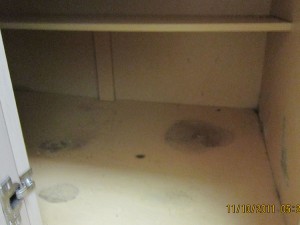 Twenty years ago, the risks of mold weren’t very well documented. People knew that moldy walls and floors were not a desirable thing, but the risks of mold (both financial and health-related) weren’t clearly understood.
Twenty years ago, the risks of mold weren’t very well documented. People knew that moldy walls and floors were not a desirable thing, but the risks of mold (both financial and health-related) weren’t clearly understood.
Today we know that mold is a serious problem; that it has to be actively prevented and swiftly dealt with. If not, the list of potential health risks is long and severe—to say nothing of the heavy financial damages it can cause.
Many homeowners know that mold should not be taken lightly, but aren’t really sure about the difference between DIY and professional efforts. People who first learn about the risks of mold often want to know if they can deal with the problem themselves (perhaps after a trip to the local hardware store) or whether it’s really necessary to call in a professional.
Knowing when DIY is a viable route, and knowing when the problem is best left to the pros, is an important aspect of mold-free living. It’s certainly true that certain scenarios—particularly infestations that are very minor, and don’t involve the more toxic varieties of mold—can be dealt with on a DIY basis if proper precautions are taken. On the other hand, there are many situations in which DIY cleaning will not resolve the problem. Being exposed to some types of mold during DIY mold removal can also be extremely dangerous.
Which type of mold is growing?
Mold literally comes in hundreds of varieties and subspecies, with all manner of textures and colors. The most dangerous types of mold (often called “toxic” or “black” mold) include Aspergillus, Penicilium, Fusarium, Stachybotrys and Cladosporium. However, there are many types of mold that are still dangerous. Some mold does not even “look” like mold—or at least what most people imagine mold looks like.
In short, mold is notoriously difficult to identify and assess properly—unless of course you’re trained in conducting professional mold inspections.
How extensive is the problem?
A good general rule is this: The more extensive your mold problem, the more necessary it will be to seek professional help. You might notice a large spot of mold on a wall or ceiling panel, or a strong odor in certain parts of the house. This is evidence that mold has reached an advanced state of growth and will not be defeated without the proper equipment and expertise.
Assessing the severity of your mold problem can be difficult for one simple reason: Mold often grows out of sight. Even if you notice visible mold, you may not have the tools or know-how to locate and remove the parts of the colony that are growing behind walls and under floorboards.
The bottom line
DIY mold removal can be a good solution in minor cases where mold has not reach an advanced stage of growth. It’s important to remember, however, that mold is notorious for popping back up when it’s not dealt with properly. A haphazard solution will almost always result in a recurring problem. Professional mold removal does incur costs—but in the majority of serious cases, it’s the most economical solution in the long term.
Thanks for reading, and good luck in your mold remediation efforts. Please feel free to leave your comments!

